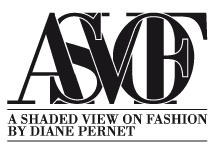Dear Shaded Viewers,
Imagine stepping back into the pre-war fashion world through the lens of “Fashion as a Model,” a fascinating exhibit at the Musée des Arts décoratifs during Paris Photo. This showcase isn’t just a nostalgic journey; it’s a powerful statement against the ever-present threat of counterfeiting in the fashion industry. The exhibit features over 120 photographs, carefully selected from the museum’s vast collection, and pairs them with fashion silhouettes and accessories from iconic designers like Jeanne Lanvin, Jean Patou, Marcel Rochas, Madeleine Vionnet, Jeanne Paquin, and Elsa Schiaparelli.
These designers used images—some candid, others meticulously staged—to assert the authenticity of their Parisian brands. Since their deposit at the Museum of Decorative Arts in 1940, these photographs have become a treasure trove of visual inspiration for today’s fashion houses. The exhibit is curated by Sébastien Quéquet, the museum’s photographic collections manager, ensuring that each piece resonates with both historical significance and artistic brilliance.
The sometimes romanticised world of counterfeiting in fashion comes alive through various media, including the film “Fashions of 1934” by William Dieterle and Busby Berkeley. Drawing inspiration from Alphonse Bertillon’s judicial photography methods of the 1880s, these model deposits became crucial in fighting counterfeiting.
Beyond the press photography that dominates fashion media, there exists a lesser-known realm: model deposits. These were essential in protecting industrial property like patents and trademarks, allowing legal actions against copying until 1979. In the early 20th century, amid the rise of Parisian haute couture and rampant counterfeiting, these photographs became key evidence in high-profile court cases, such as the famous 1921 trial initiated by Madeleine Vionnet.
An extraordinary photographic collection from the 1940s offers a visual journey through Parisian fashion from 1917 to 1934, showcasing illustrious names like Worth, Chéruit, Hermès, Callot Soeurs, Lanvin, Edward Molyneux, Jean Patou, Jeanne Paquin, and Lucien Lelong. Photography quickly became vital for capturing fashion models and collections, opening up a lucrative market for photographers and studios.
Esteemed photographers such as Man Ray, Gilbert René, Pierre Choumoff, and Henri Manuel contributed to these model deposits, though these intimate atelier shots are often less celebrated than those made for press or exhibitions. Intended for judicial and archival purposes, these images are less likely to feature renowned photographers’ signatures or famous faces but remain a rich resource for fashion history and economic analysis.
The meticulous staging in these photos reflects the care given to model deposits. Designers like Madeleine Vionnet used inventive setups with mirrors, while others, like Paul Poiret, created elaborate environments with furniture and art.
This photographic collection, will be unveiled at the Museum of Decorative Arts, to shed light on a pivotal practice in early 20th-century fashion. The goal of protecting designs from counterfeiting remains as relevant as ever, especially with the advent of digital and AI technologies.
Model deposits varied in form, from diptychs and triptychs to multi-lens systems and mirrored booths, showcasing different views of an outfit. These images often included legal status indicators: model numbers, depositor signatures, seals, and photographer stamps, all crucial for their legal protection.
Later,
Diane
Musée des Arts décoratifs
107 rue de Rivoli, 75001 Paris









